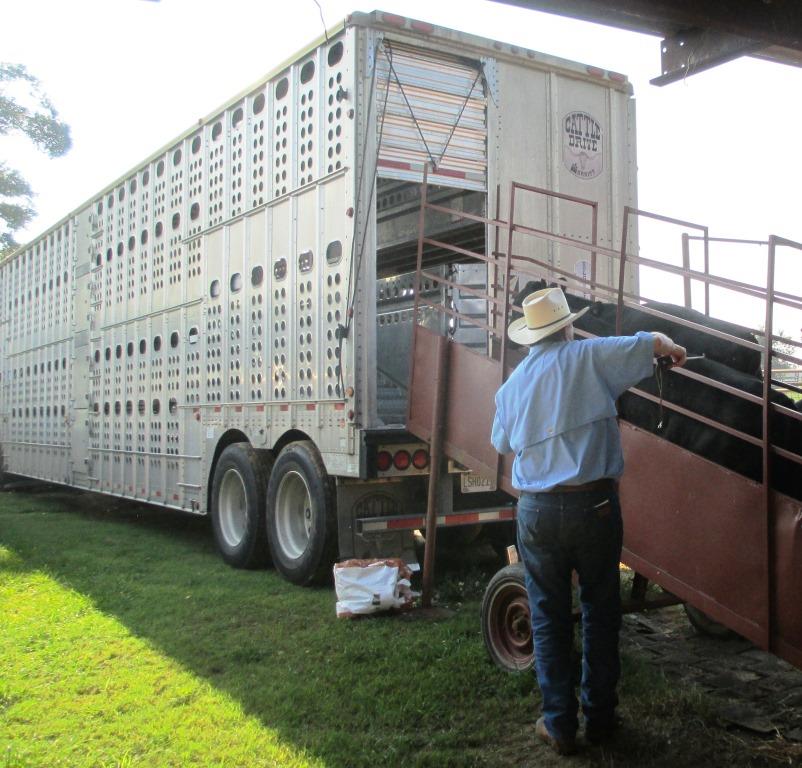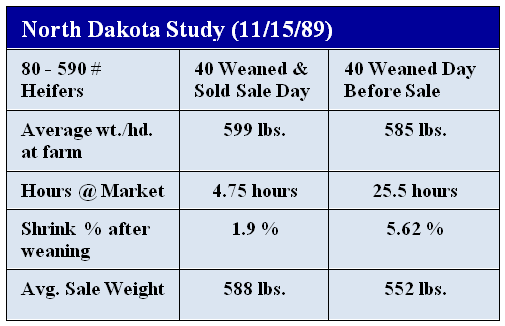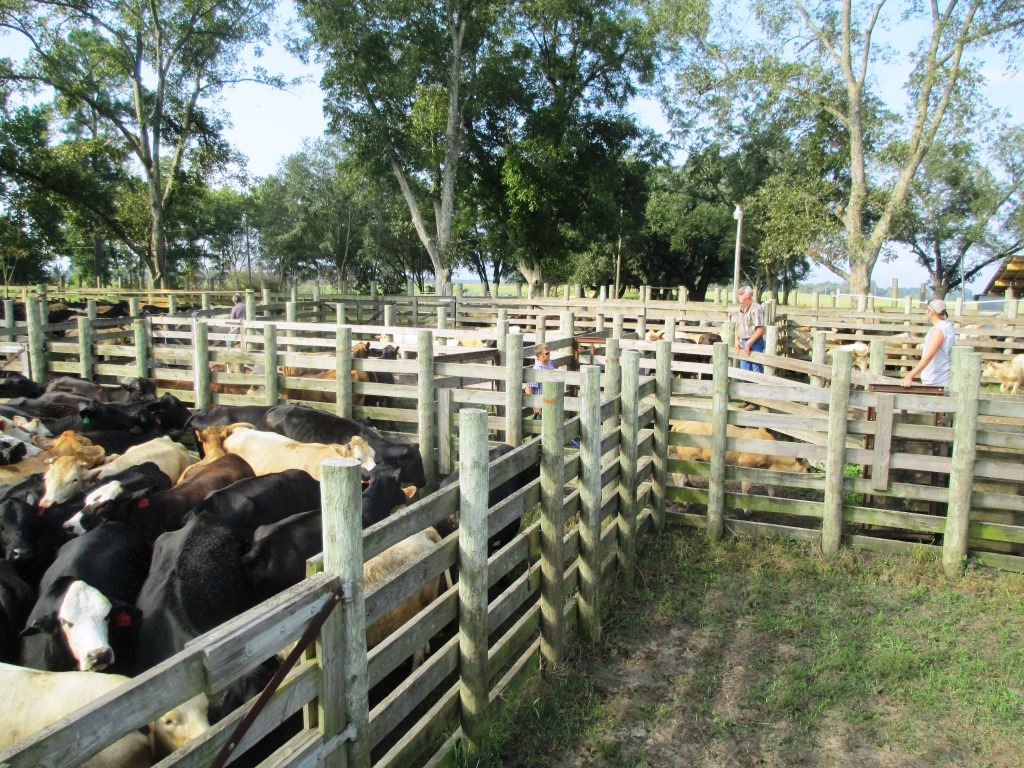As the Summer comes to an end, harvest time begins. When we think of harvest we often focus only on crops, but when ranchers ship calves to market or to a buyer, they are really harvesting a crop almost two years in the making. Florida ranchers typically wean and sell calves from six to nine months of age, the cow is pregnant for nine months, and how we feed and care for a cow before and after calving has a great deal to do with her next pregnancy. So when ranchers harvest their calf crop at weaning, it is the end result over more than two years of effort. With so much time, money, and labor involved in getting a calf to a marketable age, ranchers need to do everything in their power to protect this valuable product, which of course is sold by the pound.
When it comes to cattle marketing, one area of management that is often overlooked is shrinkage, or weight loss due to stress commonly called “shrink” in the cattle business. Calves start losing weight as soon as they are separated from their mothers, so the quicker they get from the pasture to the scale the calves will be sold on the better. Calves lose 1% of their body weight per hour for the first four hours, and then 0.25% per hour for the next 8-10 hours.
A study in North Dakota shows the difference in shrink in heifer calves that were weaned and sold the day of the sale versus those weaned the day before the sale. This study was conducted over 24 years ago, but the basic principles are still the same today, but with the change in price, reducing shrink is even more valuable.
Heifers in this weight range sold for $1.42/lb. at Alabama livestock markets this week. As is often the case in real world comparisons, the two groups of heifers in this study were not exactly the same weight (599 vs 585). If we use the average weight of all 80 heifers, 592 pounds, and only contrast the shrink, the heifers weaned and sold the same day would be worth $841, versus those weaned and sold the next day $784. The convenience of dropping cattle off the day before causes 3.7% more weight loss, and $57 per head income. Certainly there are circumstances where it is necessary to wean and sell the next day, but if possible it is best to sell calves as soon after weaning as possible.
The scenario above may be the most extreme, but any delay or added stress decreases the pay weight on cattle that are sold. Shrink comes with stress, so anything producers can due to minimize stress protects the value of the calf when it is sold. Delays before selling, overcrowding on a trailer, limited access to water, rough handling, and working in the heat of the day can all add stress and ultimately the value of calves before they are weighed on the scales that set their sale value. The whole point is to make sure everyone who is helping wean, sort and ship cattle work together to minimize calf stress and ultimately protect the valuable weight you worked so hard for two years to grow.
Download the BQA On-Farm Training Manual to use to train employees, friends and family members who help out with cattle handling on your ranch, to make sure everyone understands how important it is to minimize cattle stress.
- Northwest Florida Beef Cattle Conference & Trade Show – February 11 - December 19, 2025
- Friday Feature:The Sears Catalog –How Rural America Shopped before the Internet - December 19, 2025
- November 2025 Weather Summary & Winter Outlook - December 5, 2025




